Table of Contents
To plan a training program can really be a complex and hard task to handle because every sportsperson has individual requirements and fitness goals. If you seek professional advice for planning your program, you can turn to professional fitness trainers, but I would hold on that thought for a second. You should be sure that the training program is suited just for you and your needs. You best know your body. You know your limits and goals, therefore you are capable of making a training program yourself. Have a look at how to plan your training program at home.
Know your goal
The first thing to do before planning your training program is to set your fitness goal. You should know to define whether the reason behind the training is to help build muscle mass, increase strength, or reduce fat. Also, you should remember that your goal has to be real and achievable. If you set yourself unreal goals over time your motivation for training will, for sure, disappear. Setting a goal for your training is also important for other steps in planning your training program. Based on your goal you are able to set the frequency of your training, the number of reps, or the overall structure of a whole training program. You should follow a quality training program at least for 12 weeks because that’s the time frame in which you would be able to see the results of your hard work. [2] [3] [8]
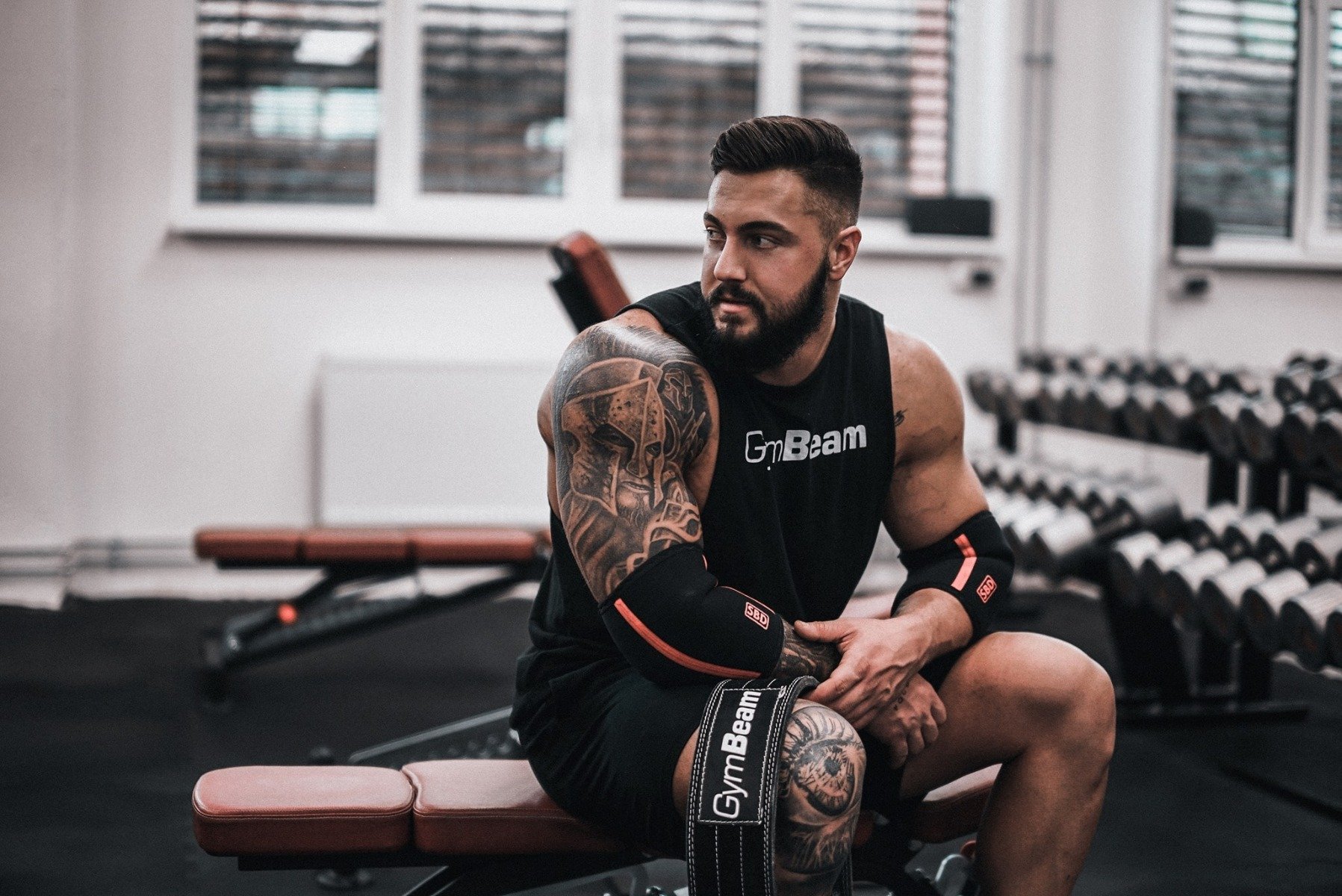
What do you need?
Many training programs are adjusted for training in the gym. Exercises are therefore created based on the weights and machines which you don’t probably have at your household. Try to do a little research on what tools you can use for home workouts. Of course, you can do bodyweight exercises but it might be not enough for advanced sportspeople. The weights in the gym help you to train your biceps, triceps, and shoulders. You can get those for your home gym or you can just use your imagination and instead of dumbells use bottles filled with water. For training your back, shoulders, and triceps you can use a suspension strengthening system or a rack, and for increasing the resistance during squats, lunges, or other whole-body exercises you can use expanders or resistance bands. While at home, a regular chair or fit-ball is a perfect little helper. The fact that you can’t or you just hate going to the gym doesn’t mean that you cannot create your own fitness paradise at home. [4] [10]
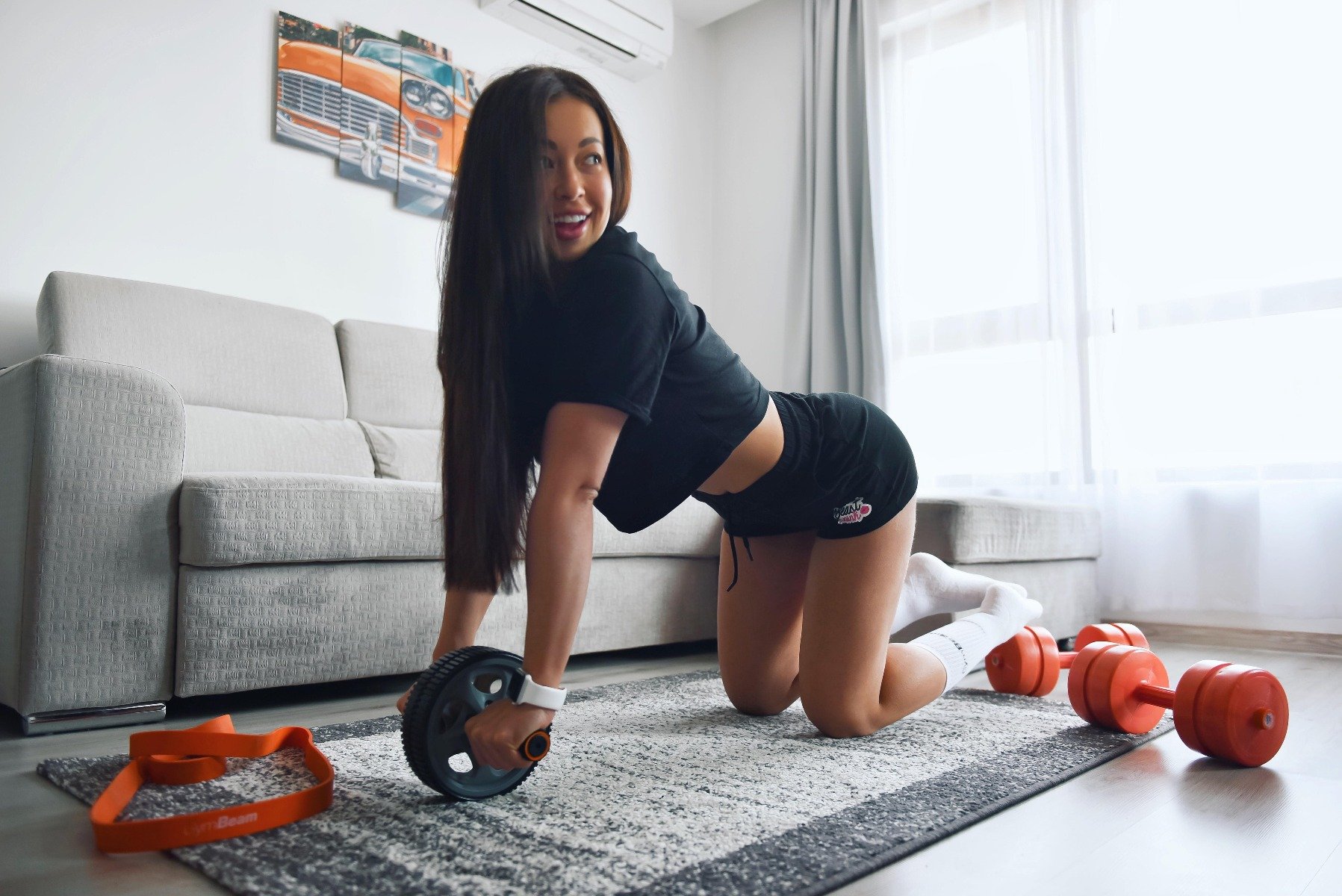
You might be interested in these products:
How to choose suitable exercises?
If you already know your goal and options that your home gym can provide, it’s time to choose appropriate exercises. Split your exercises according to the two categories – what muscle part do you want to exercises and bodyweight exercises, or tools exercises. Your complex training program should focus on exercising the whole body, therefore you should not omit the exercises for: [2] [3] [8] [10] [11]
The upper part of the body
With these exercises, you would probably use dumbells, a barbell, or a pulley machine. Training at home, you can also use the dumbells or water bottles, but instead of the pulley machine, use a quality resistance band.
Shoulders exercises – seated press up, dumbells front raise, dumbells flyes, resistance band flyes, the upright row with a resistance band
Chest exercises – decline dumbbell bench press, lying dumbbell flyes, resistance band lying flyes, dumbell bench press, push-ups, scissors, dumbells row
Back exercises – pelvic lift, narrow stance, bridges, superman, narrow back sit, lying pulls, good-morning
Biceps exercises – biceps curls with dumbells, biceps curls with a resistance band, slow-control biceps curls
Triceps exercises – narrow push-ups, triceps dips, forearm triceps push-ups, triceps dips on the chair, diamond push-ups
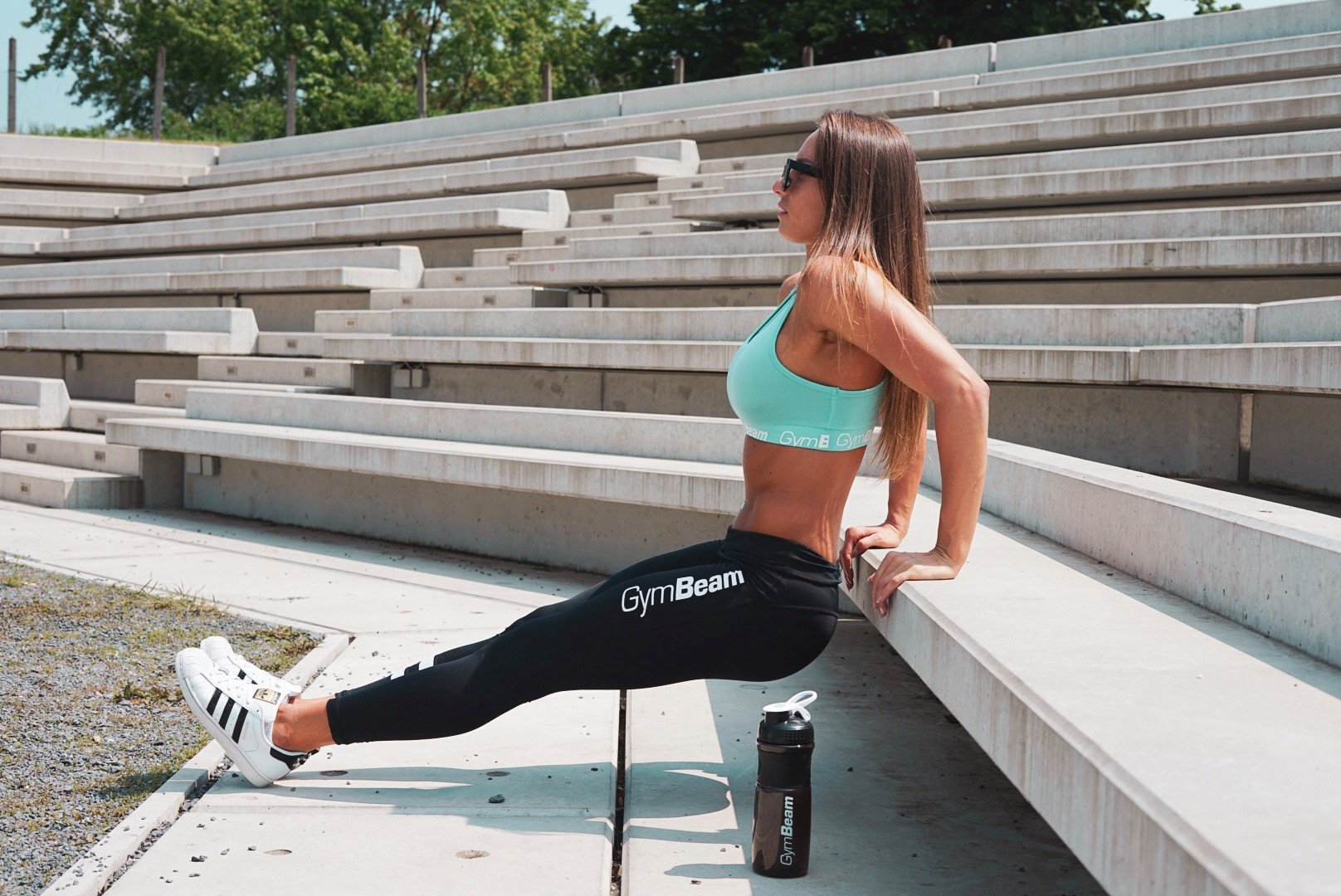
Core
Abs exercises – plank, Russian twist, sit-ups, mountain-climbers, scissors, lying bicycle, superman, crunches
Obliques exercises – side plank dips, side leg raises, side plank, bridge [9]
Legs and glutes
Glutes exercises – squats, lunges, deadlift, pelvic raises, kick-backs, sumo squats, Bulgarian squats, squat to jump – you can make it harder by adding resistance bands.
Hamstrings exercises – kick-backs, bridge, hamstring curls with resistance band, lunges, squats, side lunges
Calves exercises – calf raises, walking or running on toes
You should never forget about cardio exercises. You can take out and wipe the dust off of your stationary bicycle, run outside, or try jumping over a rope. An amazing alternative can be HIIT training, which means a high-intensity interval training. This type of training requires maximum performance and concentration during a short yet intense exercise with even shorter rests. You can burn up to 270 calories in 20 minutes and strengthen your whole body. A type of high-intensity exercise with shorter rests is Tabata. It takes approximately 4 minutes to exercise each part of the body but they might be the longest 4 minutes in your life. A structure of such an exercise looks like this: intense 20-second exercise, 10-second rest, 8 rounds. It’s important to mention that the structure only depicts one exercise, and during one tabata session you will do 3 or 4, so in total it is 24 to 31 rounds. [6] [7]
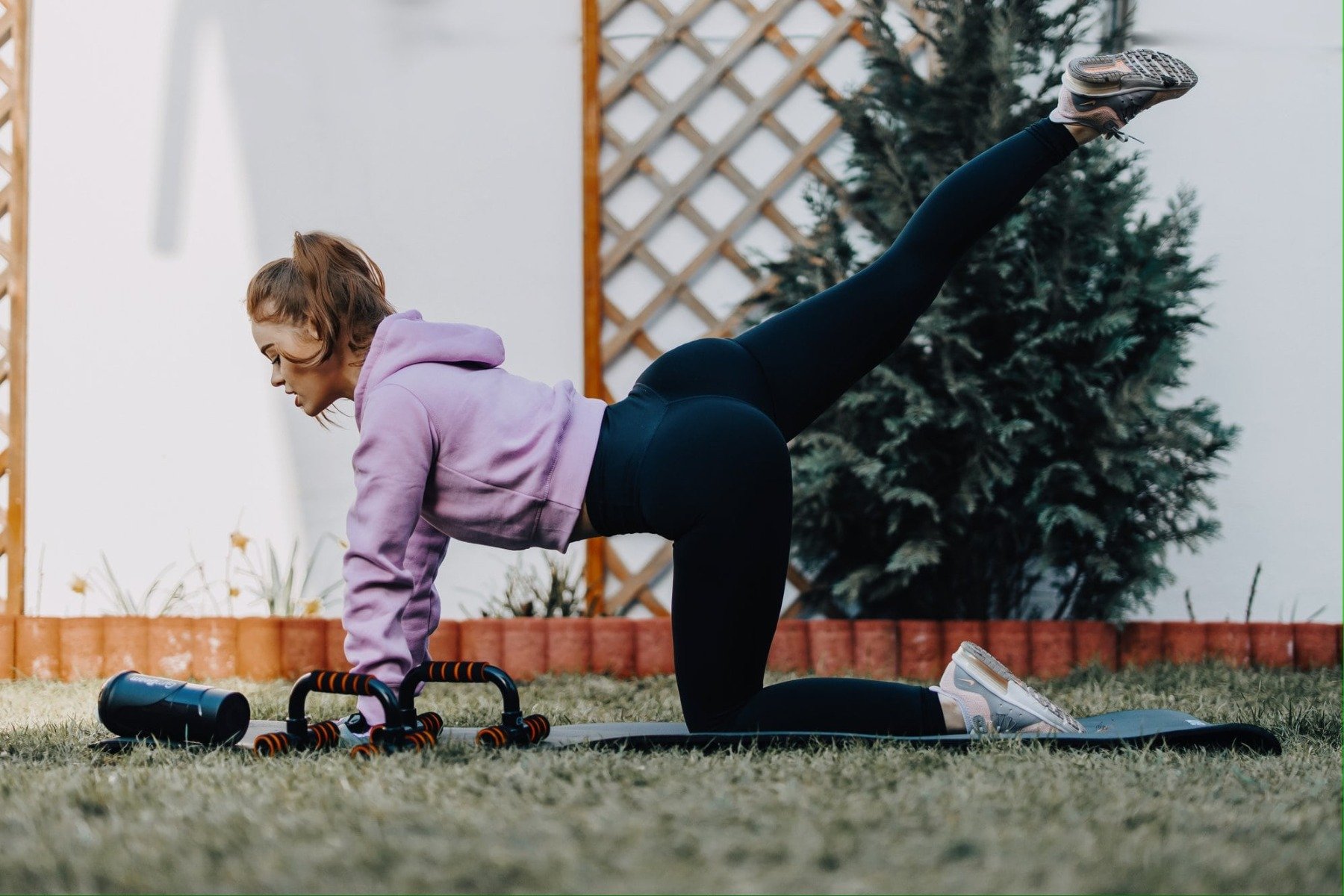
Make the right combinations of exercises
When you have finally picked up the right exercises, you should focus on their correct combination, especially if you choose to train with weights. Many combinations can cause you injuries or may stop you from training for a longer time. For this reason, you should not combine these exercises during your training: [8]
- similar muscle parts when using high-technique of lifting
- 2 exercises that stress the same joint
- exercises that can cause cranks
- exercises that drastically increase blood pressure
On the other hand, it’s been proven to be very effective when you combine: [8]
- different muscle parts
- similar muscle parts to increase their volume
- high-techniques with low-techniques of lifting
- exercises with different direction of power
How often to train?
It’s important to say that no type of training should be done excessively and you must have a rest day. During exercising, tiny fractures occur in muscle cells that need approximately 24 to 48 hours for regeneration, depending on the intensity of a workout. Therefore, it is advised to do strength training 3 to 4 times a week. Dedicate each day to another muscle part and do at least 4 types of exercises. Have a look at an example of training days division according to the body parts:
- 1. day – shoulders, back
- 2. day – legs, glutes
- 3. day – core, obliques, back
- 4. day – biceps, triceps, the upper part of the body
Cardio sessions increase heart rate so you should be cautious about that too. You shouldn’t do cardio 7 days a week. Advised frequency of cardio exercises is 3 to 4 times a week, in combination with strength training, it’s better to plan training for 3 days of strength training and 2-3 days of cardio. It’s good to go slow when you’re a beginner and have more rest days. [1] [2] [3]
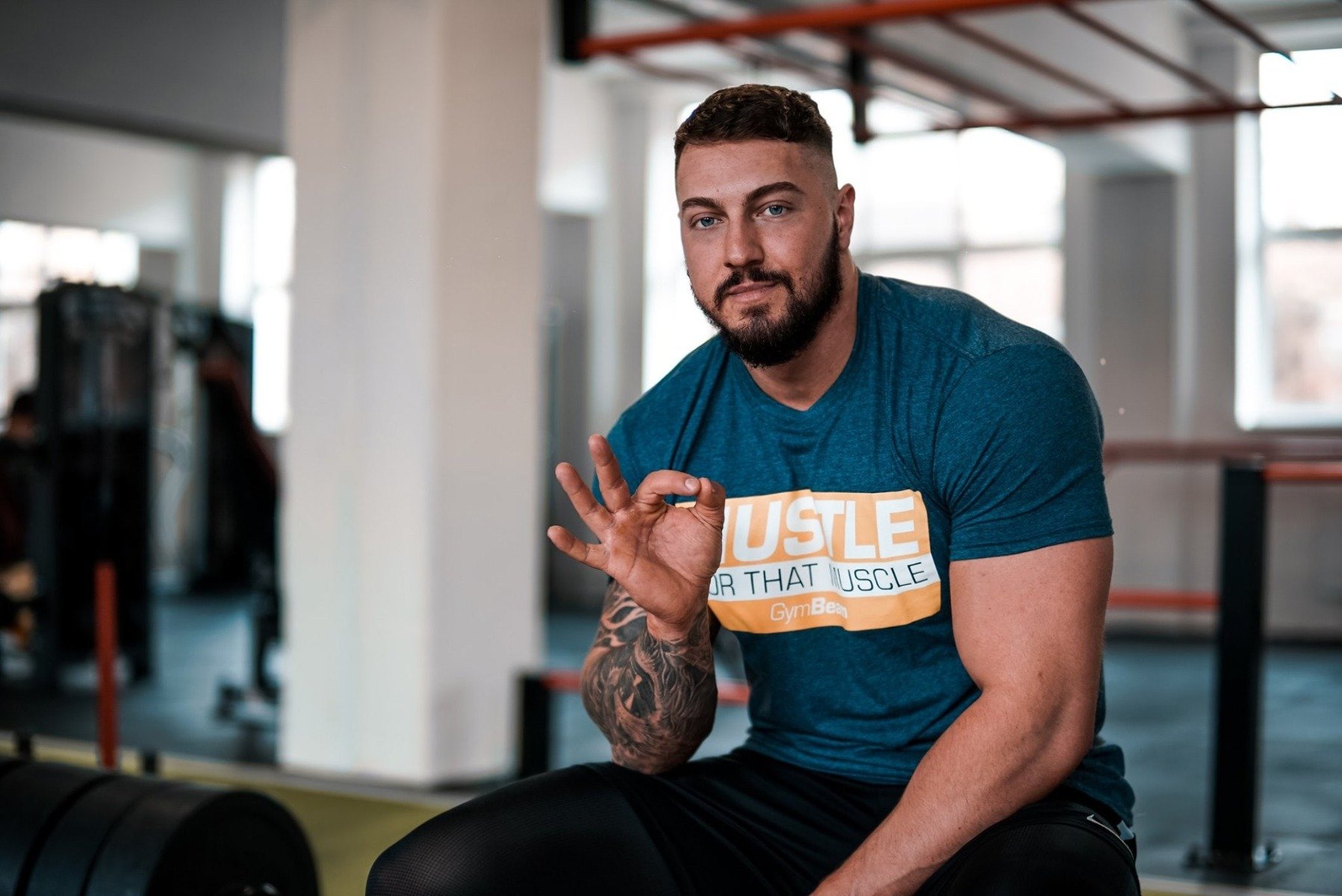
How many reps to do?
The number of reps is very individual. It depends on your previous experience, physical condition, age, or gender. It’s true that during your home workout, you can choose the higher number of repetitions as there will be no one who would want to use your machine or dumbells to bother you. Beginners can start with a lower number of reps, for example, 8 reps in 2 to 3 series for one exercise. More advanced people it’s optimal to do 10 reps and for professionals 12 reps. That’s all adjusted for home body-weight training. When training at the gym, the number of reps would have to be adjusted to weights that you work with. [1] [2] [3] [8]
Don’t forget about a warm-up
Each training session should start with a warm-up with no exceptions. Stretching helps to:
- renew muscles
- reduce muscle pain and tension
- reduce the risk of injuries of joints, tendons, ligaments
- increase physical endurance
- increase joints and muscles mobility
- increase the flexibility of the body
If you don’t warm your muscles up properly before training, you can injure yourself and your training becomes less effective. [2] [3]

What training structure to choose?
If you have thought about the previous points, it’s time to create a structure for your training. A rough structure of such a plan for a week can look something like: [3] [11]
15 minutes of stretching sit-ups 4×10 reps plank – 3×30 seconds mountain-climbers – 3×60 seconds Russian twist – 3×10 reps 20 minutes on the bicycle | |||
| Tuesday | Strength training | Legs and glutes exercises | 15 minutes stretching sumo squats 3×10 reps squat to jump – 3×10 reps lunges – 3×10 reps repeat on each leg pelvic lift – 3×10 reps 20 minutes on a jumping rope |
| Wednesday | Rest day | ||
| Thursday | Cardio | 15 minutes stretching 50 minutes running | |
| Friday | Strength training | Back and shoulders exercise | 15 minutes stretching front raises with dumbells – 3×10 reps dumbells flyes – 3×10 opakovaní superman – 3×10 reps on each leg and arm narrow stance – 3×60 seconds 20 minutes jumping over a rope |
| Saturday | Cardio | 15 minutes stretching biking outside | |
| Sunday | Rest day |
When to switch workouts?
A great benefit of exercising is that each muscle part and each purpose has a various range of exercises. Creating one optimal training program is therefore not enough. The good news is that a basic structure of a training program can be maintained but you should switch the number of reps and variations of exercises over time. Also important is not to switch workouts too often if you cannot see any results. That means that the ideal time of switching the workout is every 3 months. It might be a little later when you’re a beginner as it is especially important to first learn the right technique of exercises. The training program should change if you want: [2]
- increase number of repetitions
- revive an old training program
- increase the intensity of training

Get inspired by online training
The advantage of a home workout is the possibility to train though online training. These workouts are most often made by professional fitness trainers or skilled fitness lovers, and thereby these workouts are ideal ways of how to observe a successful training program. Quality online workouts often start with the introduction of individual exercises and explanations of their technique. Beginners are able to see for themselves how to perform individual exercises and by doing that avoid failure. Another advantage of online training is that they repeat on a daily basis, most often the Livestream workout , and each workout can be devoted to a different muscle part. If you are not in the mood or you don’t have the time to create your own training program just play a video with a workout and train according to the instructions. Don’t forget about the fact that this workout is made for more people and it doesn’t have to be the right choice for your needs. Be very mindful of the choice you make when choosing your training. [5]
We hope that these tips and pieces of advice will help you to create your own home training program. Don’t forget that you have to know your goal and adjust your training to it. How do you tackle your home workouts? Don’t hesitate and share your experience in the comment section. If you liked this article, support us by sharing it, and don’t forget that success comes with a thorough preparation!
[1] Bryan Kenny - Creating the perfect bodybuilding program! – https://www.bodybuilding.com/fun/teen-kenny4.htm
[2] The Ultimate Home Workout Plan – https://www.t-nation.com/training/6-steps-to-building-the-perfect-workout
[3] Jon Gilson - How to Design Your Own Workout Program: A Guide for Beginners – https://www.wholelifechallenge.com/how-to-design-your-own-workout-program-a-guide-for-beginners/
[4] The 15 Must-Have Pieces of Fitness Equipment for Home Workouts – https://www.health.com/fitness/best-home-workout-equipment
[5] 5 Benefits of Online Training – https://www.yourtrainingedge.com/5-benefits-of-online-training/
[6] Tara Laferrara, CPT - Tabata Training and How It Works – https://www.verywellfit.com/tabata-training-definition-1230982
[7] Charlotte Hilton Andersen - 8 Benefits of High-Intensity Interval Training (HIIT) – https://www.shape.com/fitness/workouts/8-benefits-high-intensity-interval-training-hiit
[8] Dan Blewett - 6 Steps to Building the Perfect Workout – https://www.t-nation.com/training/6-steps-to-building-the-perfect-workout
[9] Kristine Thomason - The 15 Best Abs Exercises Of All Time – https://www.womenshealthmag.com/fitness/a19996405/best-ab-exercises/
[10] Fitness 101: The absolute beginner´s guide to exercise – https://www.webmd.com/fitness-exercise/features/fitness-beginners-guide#4
[11] Daniel Bubnis, M.S., NASM-CPT, NASE Level II-CSS - How to Get a Full-Body Strength Training Workout at Home – https://www.healthline.com/health/exercise-fitness/strength-training-at-home


Add a comment